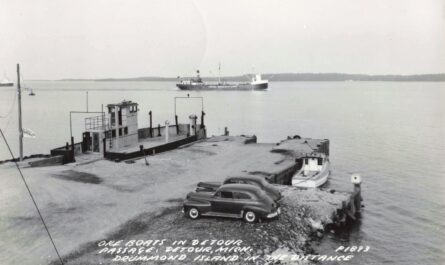The USS Michigan was the United States Navy’s first iron-hulled warship. Commissioned in August 1844, USS Michigan was considered a technical experiment using new techniques and materials as a working investigation for the U.S. Navy.
1844: First USS Michigan Enters Active Service on Great Lakes
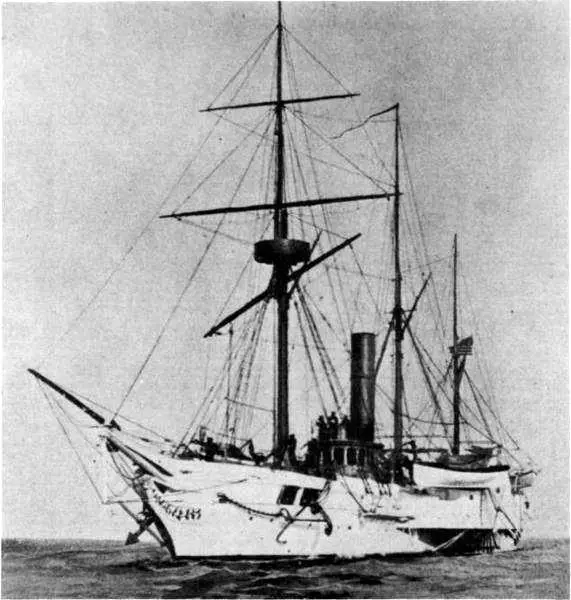
Built in Pittsburgh and re-assembled in Erie, she was 167 feet long, displaced 450 tons, and was powered by side paddlers and sails. Michigan provided a formidable and grand naval presence on the Great Lakes. The ship served for sixty-eight years, the third-longest active service of any Navy vessel. Assigned to patrol the long U.S. border with Canada from Niagara to Duluth, she rescued dozens of ships and hundreds of sailors, enforced law and order throughout the upper Great Lakes, and recruited thousands of sailors for the Navy.
Building the USS Michigan – The Most Advanced Warship at the Time
Attacks by rebels on the Canadian side of the Great Lakes during the 1837 Canadian Rebellion led the British to arm two steam-powered gunboats stationed to defend their side of the lake. In response, the United States saw a need for an advanced U.S. gunboat of its own on the lakes.
For these reasons, the USS Michigan was commissioned. The ship was manufactured in Pittsburg and reassembled in Erie, Pennsylvania. Her powerplant was a steam-powered sidewheel. As was common in early steamers, the USS Michigan also had three masts for wind power to augment the steam engine. The combination of steam engines and sails was crucial for this technically advanced warship to further travel range and ensure the ship would be maneuverable in the event of a steam engine failure. The vessel was rated for speed 12 knots, an incredible rate in those days. The ship had a crew of 88 officers and men
The ship was assigned to patrol the Great Lakes from March to December. During the winter, the ship returned to Erie to stay for the winter. The ship was docked in Erie during the winter due to the ship’s inability to travel the frozen Great Lakes.
Action on Beaver Island
When United States District Attorney George Bates decided to arrest King James Strang on Beaver Island in 1851, he asked President Millard Fillmore to support the iron-hulled paddle steamer USS Michigan the most formidable warship on the Great Lakes. The Mormons had mounted cannon on a sailing ship that was hard aground in the harbor. When the USS Michigan’s arrived with its imposing black hull, menacing eight-inch battery, and a full complement of Marines, it assured that there would be no resistance to the federal arrest warrants Bates carried.
The Timber Rebellion
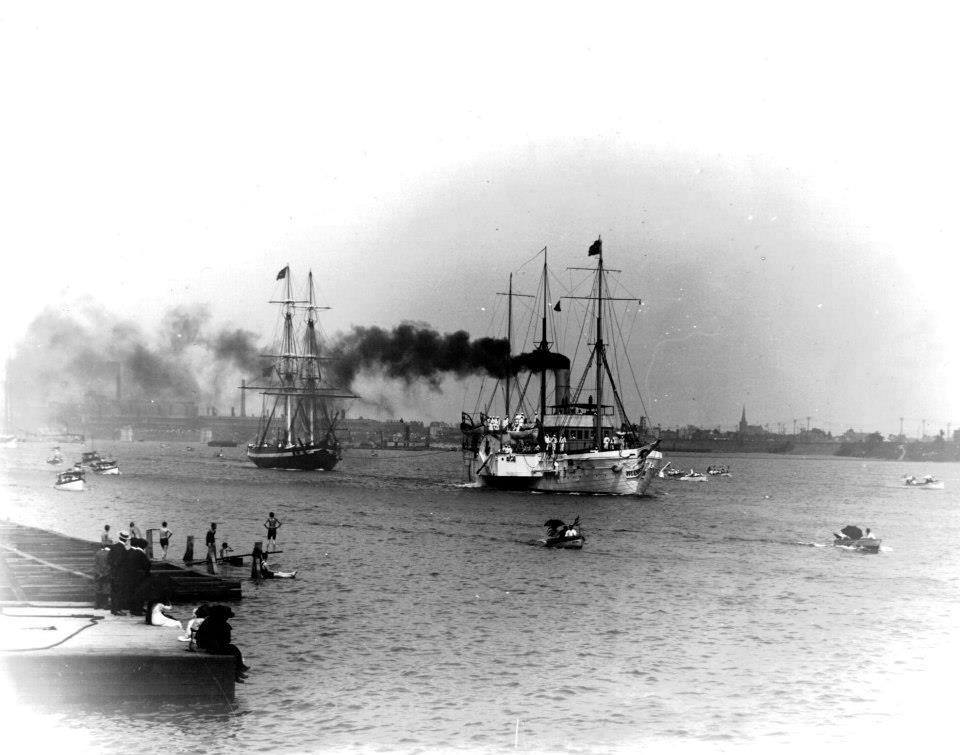
In 1853, the USS Michigan was assigned to stop massive timber thefts from federal land along Lake Michigan. During this period, the national government owned a significant amount of land in the western Great Lakes region. These federal lands were heavily forested areas primarily located along the coasts of Wisconsin, Illinois, Michigan, and Minnesota. The government’s intentions with these lands involved harvesting valuable timber to construct U.S. warships.
An increasingly large assembly of criminals, tagged with the name of Timber Pirates, saw the stockpiles of government-owned wood throughout the region as easy profit. These pirates and rebels were a relatively unorganized group of criminals who scoured the Great Lakes region to search for timber to steal from existing government stockpiles. Their goal was to steal and smuggle government-owned wood from the area to be sold for profit elsewhere. Her crew captured several “timber pirates” who were then sent by train to Detroit for trial before U.S. District Judge Ross Wilkins.
Collision with the Buffalo
On May 5, 1853, there was a collision between the USS Michigan and the largest steam-powered timber ship to sail the Great Lakes. The USS Michigan was kneading south on Lake Huron off Port Sanilac headed for New York for her yearly resupply. At 3 am, while the two ships were passing, the timber ship Buffalo suddenly vired 90 degrees into the USS Michigan. While the collision badly damaged both ships, both were able to continue to sail.
Commander Bigelow of the USS Michigan had woken up to the sound of the ship crashing into his. Incensed at this seemingly intentional collection, the USS Michigan turned around and pursued the timber steamship. He brought the warship alongside the steamer Buffalo and asked if the steamer’s crew needed any assistance. The unit indicated that they required no help, so Bigelow let the Buffalo continue her journey. Finally, however, he turned and followed the ship back to Chicago, where the USS Michigan was out of commission for two weeks of repairs.
After repairs were made, the USS Michigan captured several timber pirates with US Marines’ aid. These operations are credited with ending the 1853 Timber Rebellion in a federal victory. But the illegal logging trade continued as late as the 1870s.
Murder on Beaver Island
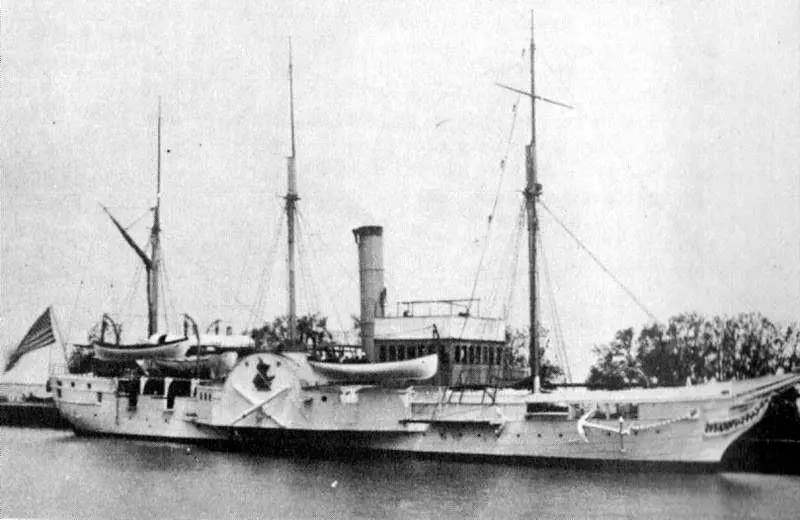
The USS Michigan was moored to the dock at Beaver Island Harbor on June 16, 1856, when two fallen-away Strangites assassinated their “king.” James Strang on the pier just in front of the ship. After the murder, the killers surrendered to the Michigan captain, who delivered them with the sheriff at Mackinaw Island, the nearest civil authority not controlled by Strang’s men. However, the men were never convicted. One theory is that the Michigan captain, Commander William Inman, knew of the plot.
Civil War Service
During the first two years of the Civil War, the USS Michigan toured Great Lakes ports, enlisting four thousand sailors for the Union Navy. In 1863, rumors of Confederate plots to invade the North from Canada caused the Navy to increase Michigan’s armament to fourteen cannon, including six powerful Parrott rifles. In October 1863, Michigan was assigned to guard the Union prisoner-of-war camp on Johnson’s Island just inside Sandusky Bay. While she was there, Confederate agents did make two attempts to seize her and release the prisoners, but neither attempt was successful, and no Confederate force ever came within range of her guns.
Ironically, the government often used Michigan’s armament and crew to keep civil order rather than repel British or Confederate invaders. For example, during the Civil War, Michigan was called upon to use her imminent appearance to check draft riots in Detroit, Milwaukee, and Buffalo. In 1865, her crew helped put down armed strikes by iron and copper miners at Marquette and Houghton just after the war. A year later, she thwarted a raid into Canada by hundreds of members of the Fenian Brotherhood, Irish-Americans. In this battle of Fort Erie, the Irish planned to occupy Canada until Britain freed Ireland.
Final Years as A Training Ship
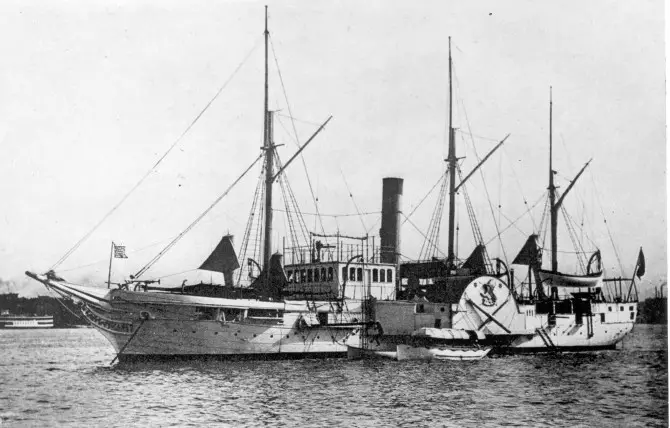
The USS Michigan was renamed the USS Wolverine in 1905. The ship remained in service as a training vessel until 1923. One of her last acts as an active warship was in 1901, when she was sent to Buffalo after the assassination of President McKinley due to the fear of riots. The Wolverine was recorded to have reached its record speed of 14 knots during the voyage to Buffalo.
The Final Days of the USS Wolverine
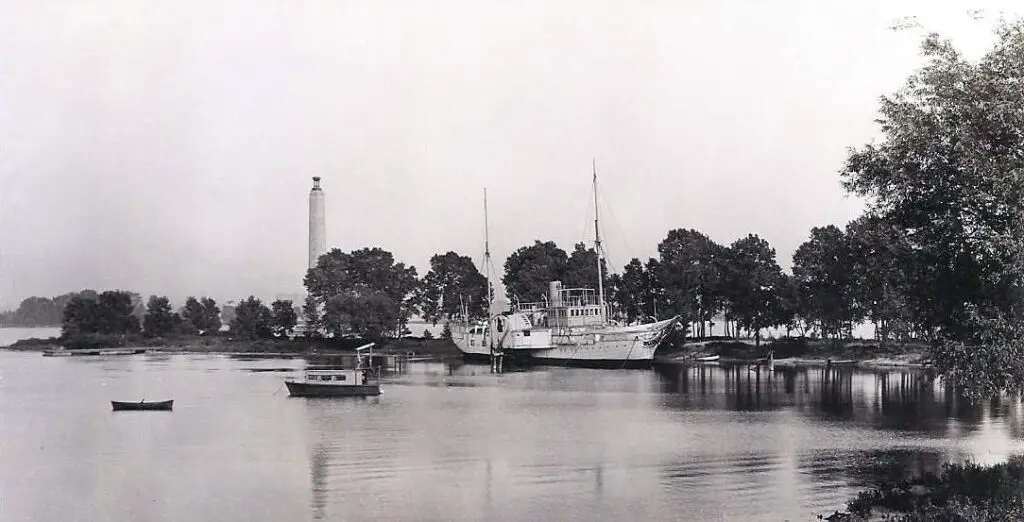
When a new battleship, the USS Michigan, was commissioned in 1905, the old battleship was renamed the USS Wolverine. The Wolverine had the privilege of pulling the recreated Niagara across the Great Lakes in a wonderful patriotic celebration during the 1913 Centenary commemoration of the Battle of Lake Erie.
On May 6, 1912, the USS Wolverine was decommissioned. She was transferred to the Pennsylvania Naval Militia, where she served for 11 years, undertaking summer training voyages for the US Naval Reserve. in 1923 mechanical failure in the engine doomed the ship and it was moored on a sand bar in Misery Bay in Erie.
Despite the personal pleas of former President Franklin Delano Roosevelt, the USS. Wolverine was scrapped in 1949. But, for years, the ship’s prow was saved and displayed on State Street in Erie.
The prow was relocated to the Erie Maritime Museum’s First Mezzanine Level on February 26th, 1998. Welding, scraping, painting, and refitting her scrollwork were all part of the lengthy repair of the bow. Erie locals, naval enthusiasts, and historians can view at least part of the old USS Michigan/Wolverine today in Pennsylvania.
More Reading on the USS Michigan/Wolverine
Erie’s History and Memorabilia – USS Michigan – USS Wolverine

.

